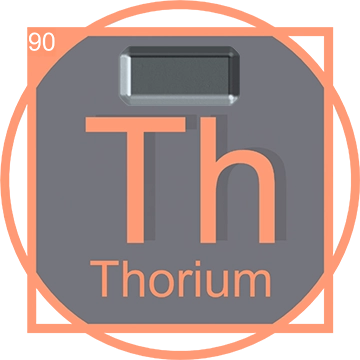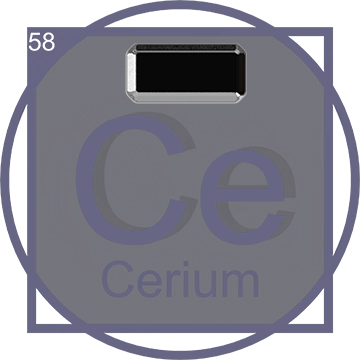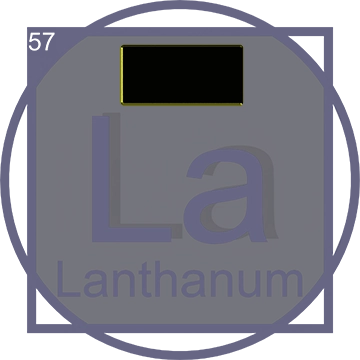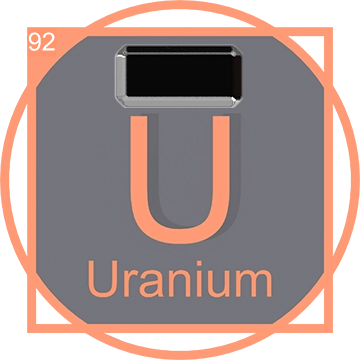Thorium (Th): Pioneering Advances in Science and Engineering
Thorium (Th), named after Thor, the Norse god of thunder, is a fascinating element with potent capabilities in energy and technology. Known for its radioactivity and rich potential in nuclear reactor technology, Thorium offers a window into a future of safer, cleaner energy. This article explores Thorium’s discovery, its unique characteristics within the periodic table, and its transformative applications from nuclear energy to medical and technological advancements. Join us as we delve into the intriguing world of Thorium, uncovering its potential to revolutionize industries and contribute to sustainable technological solutions.
Discovery of Thorium

Thorium was discovered in 1828 by the Swedish chemist Jöns Jakob Berzelius. It was isolated from a sample of a mineral now known as thorite, which he obtained from the Norwegian island of Løvøya. The element was named after Thor, the Norse god of thunder, highlighting its formidable potential. This discovery marked a significant milestone in the field of chemistry and initiated the exploration of its radioactive properties.
Thorium in the Periodic Table
Positioned as element 90 in the periodic table, Thorium is a naturally occurring radioactive material. As part of the actinide series, it is one of the major nuclear fuels with properties similar to uranium but with several potential advantages, such as greater abundance and enhanced safety features in nuclear reactor design. Explore the periodic table here.
Pure Thorium

Pure Thorium is a silvery, radioactive metal known for its remarkable properties and potential in energy applications. As a naturally occurring element, pure Thorium is soft, malleable, and has a high melting point, making it ideal for use in high-temperature environments. It is primarily valued for its ability to absorb neutrons, which makes it an excellent candidate for use in nuclear reactor technologies, especially in the development of thorium-based molten salt reactors. These reactors are considered safer and produce less nuclear waste compared to traditional uranium reactors. The unique properties of pure Thorium, including its relative abundance and the long half-life of its most stable isotope, Thorium-232, highlight its potential as a sustainable energy resource for the future.
Scientific Properties and Uses of Thorium
Thorium is a dense, silvery metal which is highly malleable and tarnishes when exposed to air, forming thorium dioxide. This compound possesses significant chemical stability and high melting points, making it ideal for high-temperature applications. Thorium's major isotope, Thorium-232, has a half-life of about 14 billion years, emphasizing its stability and making it a focus for long-term energy solutions in nuclear reactors.
Applications of Thorium in Technology

The primary application of Thorium is in nuclear energy. Thorium reactors are touted as a safer and more sustainable alternative to traditional uranium reactors, with the ability to produce minimal nuclear waste and reduced nuclear proliferation risks. Beyond energy, Thorium is used in a variety of other applications such as high-quality lenses for cameras and scientific instruments due to its high refractive index and low dispersion properties. It also plays a role in medical imaging technologies.
Production and Sources of Thorium
Thorium is primarily sourced from the mineral monazite, which contains up to about 2.5% thorium phosphate but also includes rare earth elements. The mining of monazite is widespread, with major deposits found in India, Brazil, Australia, and the United States. When extracting thorium from monazite, it is separated through a series of chemical processes that involve leaching, precipitation, and solvent extraction techniques. The resultant thorium is a radioactive metal used in various applications.
One notable mine is the Steenkampskraal mine in South Africa.
Typically, monazite sands also contain a variety of other valuable elements such as cerium, lanthanum, and sometimes uranium, which can also be extracted during the thorium refining process.
Current Uses of Thorium
Applications of Thorium in Technology

Today, thorium's primary application lies in nuclear energy, particularly in research towards developing thorium-based molten salt reactors, which promise safer and more efficient nuclear power. In addition to energy, thorium is used in scientific applications such as high-quality lenses for cameras and scientific instruments due to its high refractive index and low dispersion properties. It is also used in mantles for portable gas lights and as an alloying material in magnesium, utilizing its lightweight and high strength-to-weight ratio.
This visually engaging image captures the diverse applications of Thorium in modern technology. The foreground features a thorium-based molten salt reactor, symbolizing the latest advancements in nuclear energy technology. Accompanying this are depictions of a high-quality camera lens, illustrating Thorium's use in enhancing optical precision, and a portable gas light, showcasing its versatility. Additionally, the scene includes a representation of magnesium alloy components, highlighting Thorium's role in improving the strength and lightweight properties of materials. Together, these elements underscore Thorium's significant impact on various high-tech industries and its potential for future innovations.
The Future of Thorium
Applications of Thorium in Technology

The future of thorium is particularly promising in the field of nuclear energy, where it is seen as a key component of next-generation nuclear reactors. These reactors are expected to be safer and produce less waste than current technologies. Beyond nuclear power, research is exploring the use of thorium in new technologies, including next-generation nuclear medicine for cancer treatment and in space exploration technologies, where its potential as a compact energy source could power long-duration missions.
This captivating image offers a glimpse into the future of space travel, envisioned a century from now. Inside the advanced spacecraft, the viewer looks out through a large viewport at a companion ship slicing through the cosmos. The interior is outfitted with sophisticated control panels and digital displays, all powered by thorium-based nuclear energy. Symbolically, Thor, the Norse god of thunder, is creatively integrated into the scene, depicted as steering the vessel. This artistic element underscores the mythic and powerful nature of thorium, driving the ship forward into unknown realms. The image vividly illustrates the potential of thorium not only as a sustainable energy source but also as a cornerstone in the future of interstellar exploration and nuclear medicine.













